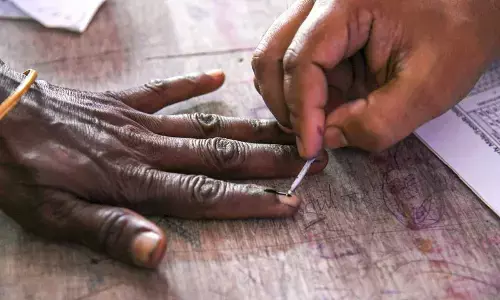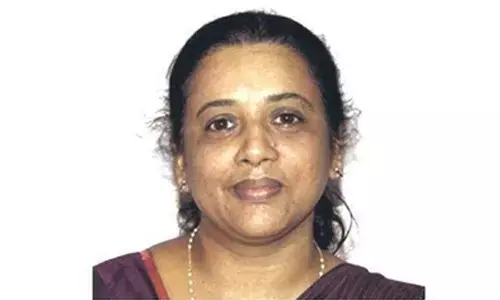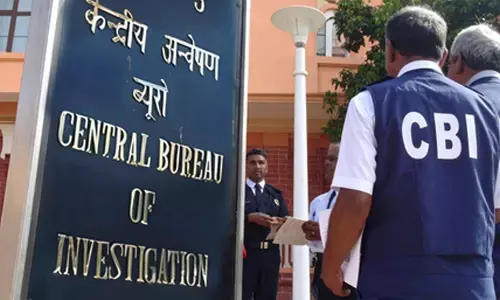Will Gujarat model work for India? For the most part, it will

Will Narendra Modi\'s Gujarat Model Work For India? For The Most Part, it Will. Now that the \"Gujarat model\" is fair game to all of Narendra Modi\'s opponents - from Priyanka Vadra to Rahul Gandhi to assorted Left intellectuals to even a Jesuit college principal in Mumbai
Now that the "Gujarat model" is fair game to all of Narendra Modi's opponents - from Priyanka Vadra to Rahul Gandhi to assorted Left intellectuals to even a Jesuit college principal in Mumbai -- it is worth delving into something more basic: what is the Gujarat model exactly? What are its good and bad points?
Contrary to the general myth that the Gujarat model is about favouring business at the cost of the rest, the fact is Modi has laid extraordinary emphasis on growing agriculture in the state. In fact, without agriculture, the Gujarat story would be incomplete. If agricultural prosperity is inherently inclusive – since more people are involved in agriculture than industry or services – then the Gujarat model is inherently inclusive
Clearly, the Gujarat model under Modi is not a pure capitalist model. It is pro-business, but retains elements of a strong state and public sector performance. One should call the Modi model as something that steers clear of right- and left- categorisations. Perhaps, the Gujarat model is the ideal form of mixed economy where both the state and business play their allotted roles

Dipankar Gupta, Director, Centre for Public Affairs and Critical Theory, Shiv Nadar University, writing in The Times of India, excoriates the principal of St Xavier's College, Frazer Mascarenhas, for “putting his institutional status in jeopardy” by publicly chastising the BJP and favouring the Congress. Among other things, Mascarenhas pretended to discuss the Gujarat model and then made cursory references to the Food Security Bill and said this was the stark choice before voters. Gupta writes: “By doing what he did, Father Mascarenhas ceded territory to small people wearing tight clothes, doing lasting harm to his status and to the institution to which he belongs.”
Surjit Bhalla, Chairman of Oxus Investments, writing in The Indian Express, who sees hope in Modi, blasts anti-Modi intellectuals for simply ranting and failing to provide the evidence against the Gujarat model. He writes: “A sine qua non feature of self-proclaimed anti-Modi intellectuals (is there any other kind?) is never to cite any empirical evidence in their accusations.” Taking the example of Shiv Viswanathan, who took on Modi’s alleged lack of attention to tribal welfare by citing Amartya Sen’s human development index as a superior measurement of development, Bhalla points out the vacuousness of this argumentation: “No evidence is provided because once one mentions Nobel laureate Sen, no evidence is needed (for the intellectual).” So, clearly, intellectuals are not quite what they claim to be, and both Gupta and Bhalla agree on this.
Now, for the Gujarat model. Is there a unique Modi contribution to it? What is that? Whom does it benefit? And whom does it leave out? I have identified five or six features that qualify as part of the Gujarat model. Some of them are unique, others common to other states, and the rest humdrum points.
First, and the most distinguishing feature of the Gujarat model, is its business-friendliness. As a state that is overflowing with the spirit of entrepreneurship, Gujarat is probably the country’s most investor-friendly state. Critics say this has nothing to do with Modi, and that this spirit always existed. This is true. However, to say Modi had nothing to do with it is a travesty. Under Modi, the state has had its most prolonged period of political stability, and Modi, with his personal interest in reducing red tape and administrative lethargy, has been able to take Gujarat one notch higher in terms of investor-friendliness. This is why no industrialist has ever had any cribs about Gujarat; this is why even foreign governments have been forced to kiss and make up with Modi.
.jpg)
Another criticism of the Gujarat model is said to be crony capitalism. But this is not quite right. While it is possible that one or two businessmen may have benefited more from a particular policy (Gautam Adani got a huge tract of non-agricultural government land at Re 1-32 per square metre), the state as a whole does not appear to be doing favours to businessmen on the basis of a power equation with Modi. If that was the case, we would have heard about it.
Second, the distinguishing feature of the Gujarat model under Modi is that it is balanced between being business-friendly and agriculture-friendly. Contrary to the general myth that the Gujarat model is about favouring business at the cost of the rest, the fact is Modi has laid extraordinary emphasis on growing agriculture in the state. In fact, without agriculture, the Gujarat story would be incomplete. If agricultural prosperity is inherently inclusive – since more people are involved in agriculture than industry or services – then the Gujarat model is inherently inclusive, writes Ashok Gulati, former Chairman of the Commission on Agricultural Costs and Prices, in The Times of India.
He says: “Going by the agri-GDP growth registered at state-level during the 2000s, Gujarat tops the list with 9.8 per cent per annum growth, up from a meagre 2 per cent during 1990s. The former is almost three times the growth rate registered at the all-India level. So, if one wants to discuss the Gujarat model of development, it cannot be viewed as a 'toffee model' but more as an 'agriculture turnaround model'. Compare this with the Kerala model, where agri-GDP growth has been zero for the 2000s (down from 1.3 per cent during 1990s). Or with UP or Tamil Nadu or West Bengal models, all of which registered less than 3 per cent growth in agriculture during 2000s.”
Herein lies the critical differentiator with Gujarat. Both Maharashtra and Tamil Nadu did better than Gujarat on the overall growth story, but Gujarat has excelled in agriculture. What it has done is applied trickle down economics to agriculture – and it has worked. Third, another feature of the Gujarat model is economic freedom – which is critical for good governance. This is different from merely being business-friendly, and in this Gujarat is unique. We can’t leave Modi’s contribution out of this aspect of the Gujarat model, for Gujarat has topped the Economic Freedom of States in India rankings for the third time in a row. Writes Swaminathan Aiyar, one of the authors of the index: “Economic freedom is not identical to good governance. But lack of economic freedom typically means poor governance — a jungle of rules and obfuscating bureaucrats that promote corruption, delay and harassment. This hits everybody from farmers and consumers to industrialists and transporters.” Aiyar does not fail to comment on 2002 – which certainly was a failure of good governance - but points out that since that time, the state has had communal peace, and that today Gujarat has the lowest “Muslim rural poverty rate among all states. Its overall poverty rate for Muslims (11.4 per cent) was far lower than for Hindus (17.6 per cent).” Aiyar’s conclusion: “Gujarat has good governance. It has social and communal flaws. But it is India's top state in economic and agricultural freedom. That's not hype.”
Fourth, Gujarat’s top-down model of development keeps its social indicators relatively low compared to its above average rankings on growth parameters. The Gujarat model does not believe in doles and direct subsidies, as evidenced by its performance in the power sector – where the state runs some of the most efficient power companies. There are limited subsidies for the rural sector, but lower than in other states. Farmers get limited power at just over 60 paise per unit, but they get 24x7 power at higher, commercial rates. Net result: Gujarat runs an economically viable power sector. The state believes that efficient economic growth ultimately trickles down to all segments – but in the interim the state clearly has lower human development indicators (HDI) than it should.
Among Indian states, Gujarat figures in the middle category of states – far below Kerala’s 0.790 at 0.527, and also below Maharashtra and Tamil Nadu (0.572 and 0.570), but above Karnataka (0.519). Clearly, this is where the Gujarat model of trickle down is not good enough to lift the really poor – socially and economically – out of their misery quickly. Here, Modi’s critics do have a point. Gujarat ranks 11th among 23 states in HDI. However, there is a reason why Gujarat figures lower down the HDI scale compared to other developed states like Maharashtra and Tamil Nadu: it is the only big state with a huge tribal population.
Gujarat’s tribal population is nearly 15 per cent of the total (14.79 per cent, to be exact), which is nearly twice as large as Maharashtra’s (8.87 per cent) and more than twice as large as Karnataka’s (6.55 per cent), or Andhra Pradesh’s (6.53 per cent). Tamil Nadu and Kerala, the states with far better human development indicators than Gujarat, have barely 1 per cent tribal population. It is this tribal gap that explains a large part of Gujarat’s laggard status in terms of human indicators.
Fifth, another key differentiator is Modi himself. As Vivian Fernandes, who has written a book on the Gujarat model, points out, while Gujarat has seen 9-10 per cent GDP growth consistently, it is not exceptional. He writes: “There is a Gujarat model of development with its reliance on private enterprise. Industrial promotion has been a leitmotif of successive Gujarat administrations regardless of personality or party. While earlier it was done by officials, Modi now leads the investment effort loudly, and visibly, from the front. So while there is no Modi model of development, there is a Modi way of executing it.” There is clearly a Modi model of governance, which has been an important ingredient for success – especially in the agricultural area.
Sixth, Gujarat goes beyond business-friendliness. It is not actually a right-wing ideologue’s ideal state where the state runs no business. Write Fernandes: “Modi is pro- business (but) not necessarily pro-markets. He is a loud liberaliser but measured in practice. Unlike Vajpayee government’s which privatised state enterprises, Modi believes in turning them around. The return on investment in public enterprises has doubled under his tenure to seven percent, according to state audit reports. While Modi has hived off the state’s electricity utilities he has not privatised them for fear they will not care for non-creamy customers.”
Clearly, the Gujarat model under Modi is not a pure capitalist model. It is pro-business, but retains elements of a strong state and public sector performance. One should call the Modi model as something that steers clear of right- and left- categorisations. Perhaps, the Gujarat model is the ideal form of mixed economy where both the state and business play their allotted roles, with the balance tilted in favour of growth and private business. It works. It would work better with a few tweaks to improve the state’s HDI. Will the Gujarat model work elsewhere. Most elements will (being business friendly, improving economic freedom, investing in agriculture, etc), some will not (especially Modi's iron control of the bureaucracy). The critics of the Gujarat model are thus more wrong than right.



















